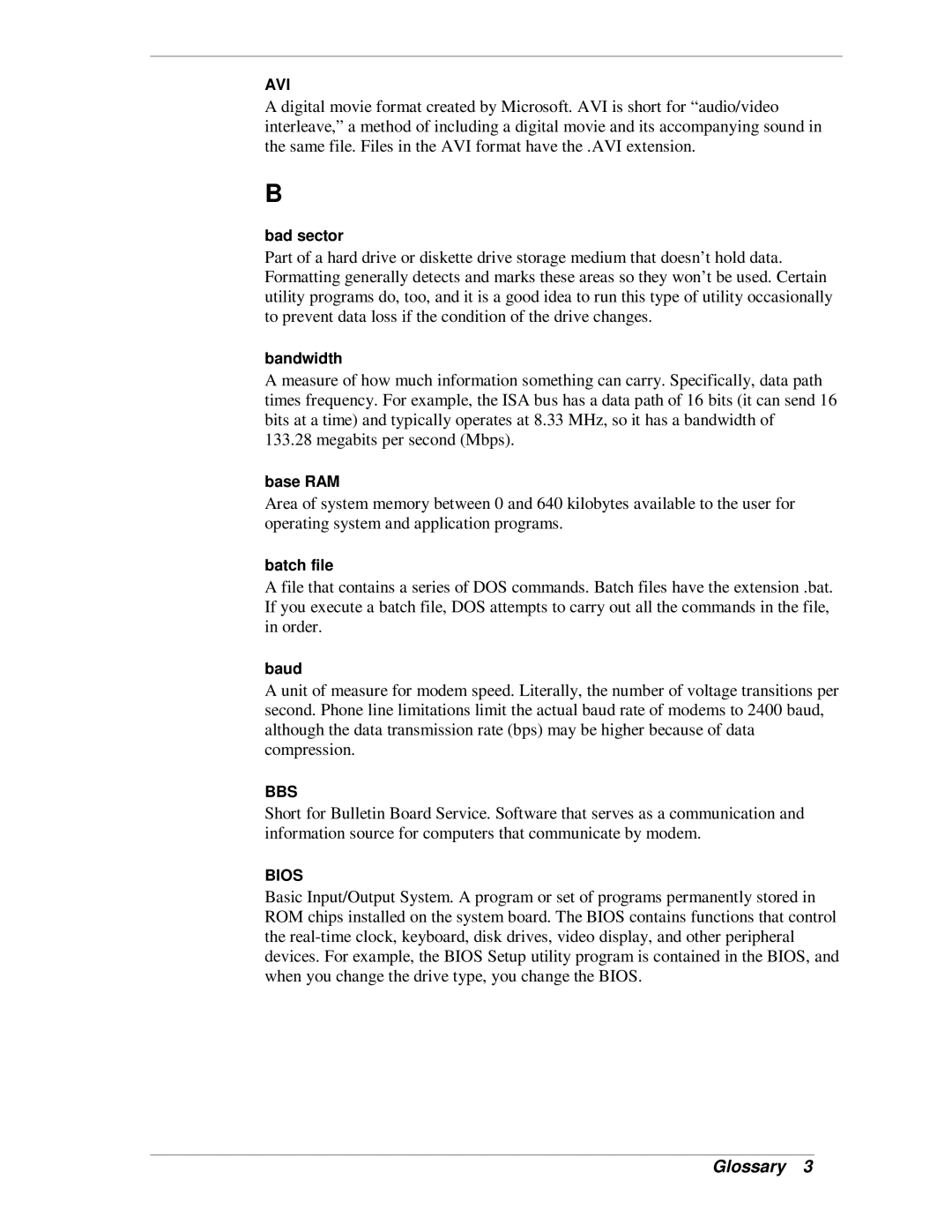
AVI
A digital movie format created by Microsoft. AVI is short for “audio/video interleave,” a method of including a digital movie and its accompanying sound in the same file. Files in the AVI format have the .AVI extension.
B
bad sector
Part of a hard drive or diskette drive storage medium that doesn’t hold data. Formatting generally detects and marks these areas so they won’t be used. Certain utility programs do, too, and it is a good idea to run this type of utility occasionally to prevent data loss if the condition of the drive changes.
bandwidth
A measure of how much information something can carry. Specifically, data path times frequency. For example, the ISA bus has a data path of 16 bits (it can send 16 bits at a time) and typically operates at 8.33 MHz, so it has a bandwidth of 133.28 megabits per second (Mbps).
base RAM
Area of system memory between 0 and 640 kilobytes available to the user for operating system and application programs.
batch file
A file that contains a series of DOS commands. Batch files have the extension .bat. If you execute a batch file, DOS attempts to carry out all the commands in the file, in order.
baud
A unit of measure for modem speed. Literally, the number of voltage transitions per second. Phone line limitations limit the actual baud rate of modems to 2400 baud, although the data transmission rate (bps) may be higher because of data compression.
BBS
Short for Bulletin Board Service. Software that serves as a communication and information source for computers that communicate by modem.
BIOS
Basic Input/Output System. A program or set of programs permanently stored in ROM chips installed on the system board. The BIOS contains functions that control the
